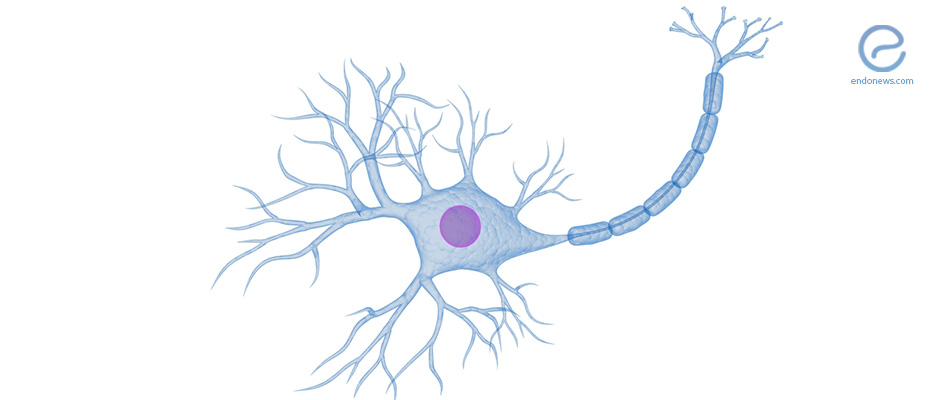Is it Estrogen that Regulates Endometriosis Pain?
Jul 12, 2017
High estrogen level in endometriosis is suggested to be the cause of increased pain sensation
Key Points
Is it Estrogen that Regulates Endometriosis Pain?
Highlight:
- Estrogen could be responsible for pain in endometriosis because it can stimulate sensory neurite formation.
- This study identifies the factors that are influencing the pain endometriosis and in ovarian cancer.
Importance:
- The high level of estrogen concentration in peritoneal endometriosis might explain the differential pain perception in endometriosis and ovarian cancer.
- Estrogen might be a key factor that influences endometriosis pain.
What's done here:
- A total of 18 patient tissue samples with endometriosis, 15 with ovarian cancer and 15 unaffected peritoneum samples were collected to identify nerve fibers and neurotrophins.
- 23 endometriosis peritoneal fluids, 25 ascites fluids, and 20 peritoneal fluids of patients with myoma uteri as controls were also collected to evaluate neurotrophins and estrogen expression.
- Authors also tested the effect of peritoneal fluids/ascites on neurite outgrowth in chicken sensory nerve cells.
Data:
- The total and sensory nerve fiber density in the tissue samples of endometriosis was higher than that in ovarian cancer.
- All neurotrophins tested were present in tissue and fluid samples of endometriosis and ovarian cancer.
- The estrogen level in peritoneal fluid of endometriosis, however, was significantly higher than that of ovarian cancer.
Limitations:
- Although estrogen may involve in endometriosis pain-genesis, a direct proof is lacking. Thus the causal impact is not clear.
- More experimental validation will be needed to identify the underlying mechanism of how estrogen modulation affects pain stimulus directly.
Lay Summary
Endometriosis-associated pain is a debilitating condition; however, it is surprising that the perceived pain has no correlation to the endometriosis extent. The mechanism that causes the pain is also poorly understood. Nerve growth factor is enhanced in endometriosis and may increase sensory hypersensitivity by modulating inflammatory processes. Inflammatory components such as interleukins, tumor necrosis factor alpha and interferon are elevated in endometriosis and tend to associate with severity of pain experienced by patients. A disturbed hormonal homeostasis can alter pain perception and sensitization.
The article by Bӧrner and co-authors in Reproductive Sciences aimed to shed light on the histological and molecular factors underlying differential pain perception in endometriosis and ovarian cancer. Both of these gynecologic conditions affect the peritoneum, but endometriosis is highly related to pain, while ovarian cancer is asymptomatic till the late stage of the disease. The pain in endometriosis can be due to small lesions, whereas the extensive spreading of tumor in ovarian cancer can go undetected. Hence, this report examines the changes in nerve fiber density, neurotrophins, inflammatory parameters and hormones levels comparing endometriosis and ovarian cancer.
In total 18 patient tissue samples with endometriosis, 15 with ovarian cancer and 15 unaffected peritoneum samples as controls collected to identify nerve fibers and neurotrophins. Also, 23 endometriosis peritoneal fluids, 25 ascites fluids, and 20 peritoneal fluids of patients with myoma uteri serving as controls were collected to evaluate neurotrophins and estrogen expression. The authors further tested the effect of peritoneal fluids/ascites on neurite outgrowth in chicken sensory ganglia.
The experiments showed a significantly elevated nerve fiber density in the proximity of peritoneal endometriotic lesions, which could be a reason for the pain experienced in women with endometriosis. In contrast, nerve fibers rarely occur around tumor cells. Furthermore, the total nerve fiber density is statistically significantly higher in endometriosis. The estrogen concentrations in peritoneal fluids of endometriosis were also considerably higher as compared to levels in ascites of ovarian cancer. Such striking differences in peritoneal estrogen levels potentially influence the differential perception of pain.
This study is limited by the lack of direct proof for the role for estrogen in mediating endometriosis-related pain. It is also unclear how estrogen regulates pain genesis. Further studies on this subject matter may shed light on a deeper understanding of endometriosis symptom.
Research Source: https://www.ncbi.nlm.nih.gov/pubmed/28659008
Pain endometriosis symptom Estrogen ovarian cancer hormones

